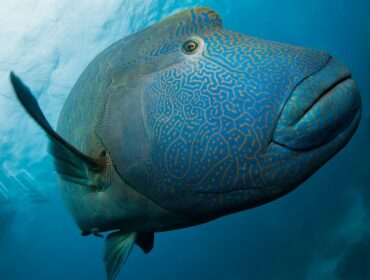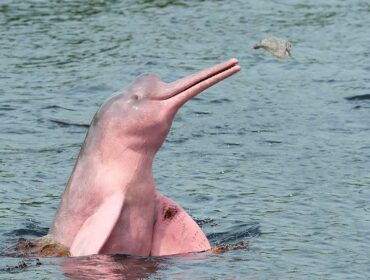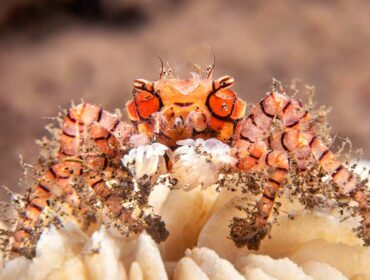Humpback whales are one of the Earth’s most majestic creatures, featured in the history of man for centuries. A species of baleen whale, the humpback is the third largest cetacean in the world; fin whales being the second, and blue whales taking the prize for largest. Its size ranges from 39-52 feet in length, and can weigh nearly 40 tons! Despite their enormous size, however, humpback whales are quite acrobatic, often photographed in various breaching stages, performing twists and turns that bring their entire bodies out of the water. Although an accurate estimate of their age has been difficult for scientists to pinpoint, tests have shown that the humpback’s lifespan can range from 50 to more than 150 years. What is known for certain is that humpback whales enjoy a rather lonely existence in the planet’s vast oceans.
There are only a few times in a humpback whale’s life when socialization is paramount: courtship, feeding, and calving. Courtship between humpback whales consists of a slew of males all competing for one female, sometimes forming “super pods” of more than 40 males. While the female may swim in any direction she chooses, the battle among the males can be fierce, sometimes even resulting in bloodshed. The males employ a wide array of tactics to win the female’s affection, including spyhopping, tail and fin slapping, full breaches, charging, and lob-tailing. Male humpbacks will often breach right on top of each other or fin slap one another to overpower and get their chance to shine. Contrary to popular belief, humpback whales do not mate for life with one partner; in fact, scientific evidence has shown that several calves from one mother can all have different fathers.
Calving is the only time that an intense bond is formed between humpback whales, for obvious reasons. Baby humpbacks are born weighing one ton or more, and measure about 12-14 feet long, but like most newborns, they are completely incapable of doing anything for themselves. Within the first few hours of a baby humpback’s life, the mother is monitoring him constantly, pushing him to the surface every 3-5 minutes to breathe, guiding it along the surface of the water column. For at least 6 months, the baby survives solely on its mother’s milk, which is comprised of 50 percent fat — better nutrition than even most adult humpbacks are privy to! During this time, the baby grows an average of one inch and 100 pounds per day. After the initial milking period, the growing baby will alternate between suckling and independently feeding, all under the careful watch of its mother. The entire duration of the mother and calf relationship can last up to two years, and the mother will not calve again for another 1-2 years.
Humpbacks are known to join forces for feeding in the creation of bubble nets, a technique that involves a group of whales swimming in a circle blowing bubbles a distance below a school of prey, creating a shrinking ring around the school and entrapping it. Once this is accomplished, the humpbacks will lunge upward into the bubble net with their jaws wide open, swallowing thousands of fish or krill in one gulp. Vocalization has also been observed to be a part of their predatory behavior, although the exact purpose for many of the humpback whale’s “songs” is yet to be fully understood.
Aside from these few instances of social behavior, the humpback whale spends much of its life alone migrating from north to south, covering an average of 16,000 miles of ocean per year. Though they do not congregate regularly with their own species, humpbacks have displayed a significant curiosity towards humans, making them excellent subjects for eco-tours. If you’ve ever gotten to watch one from a nearby boat, it is easy to instinctively feel a deep connection between ourselves and these gentle, solitary giants.





